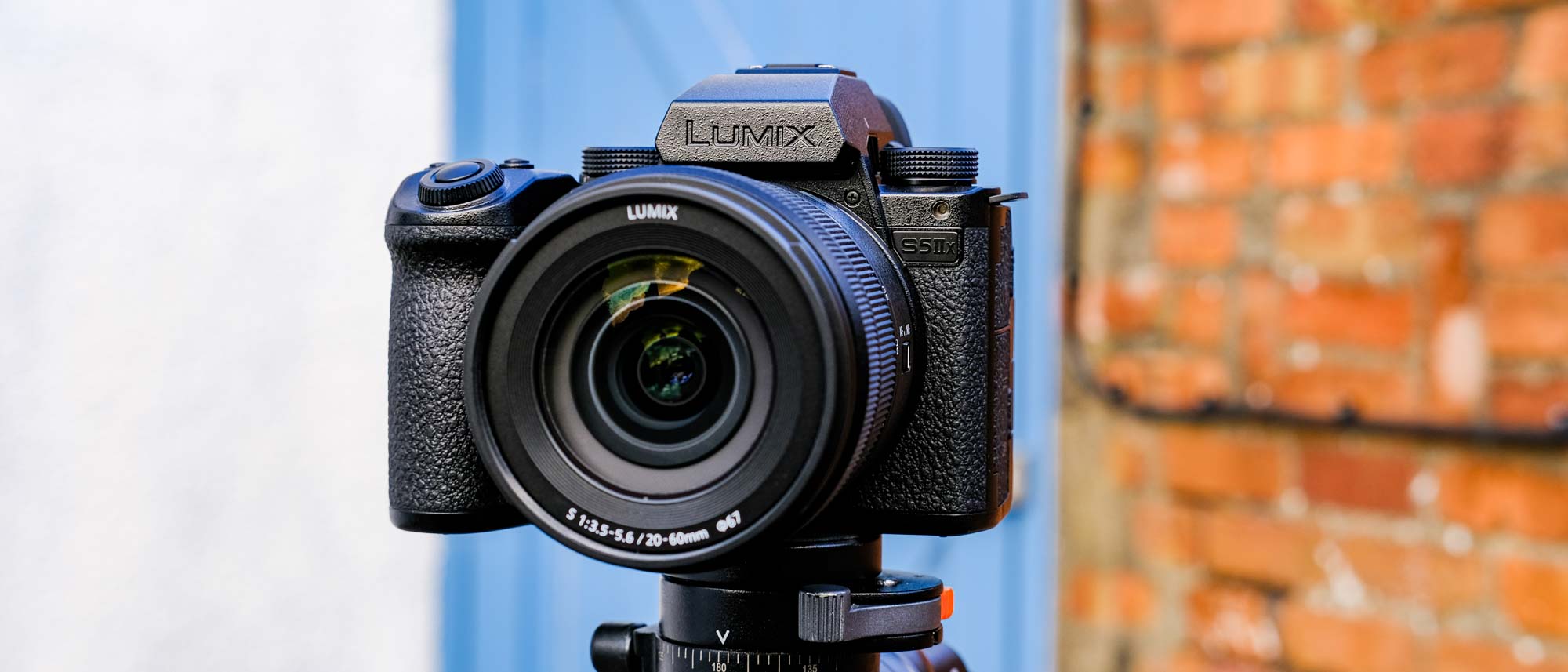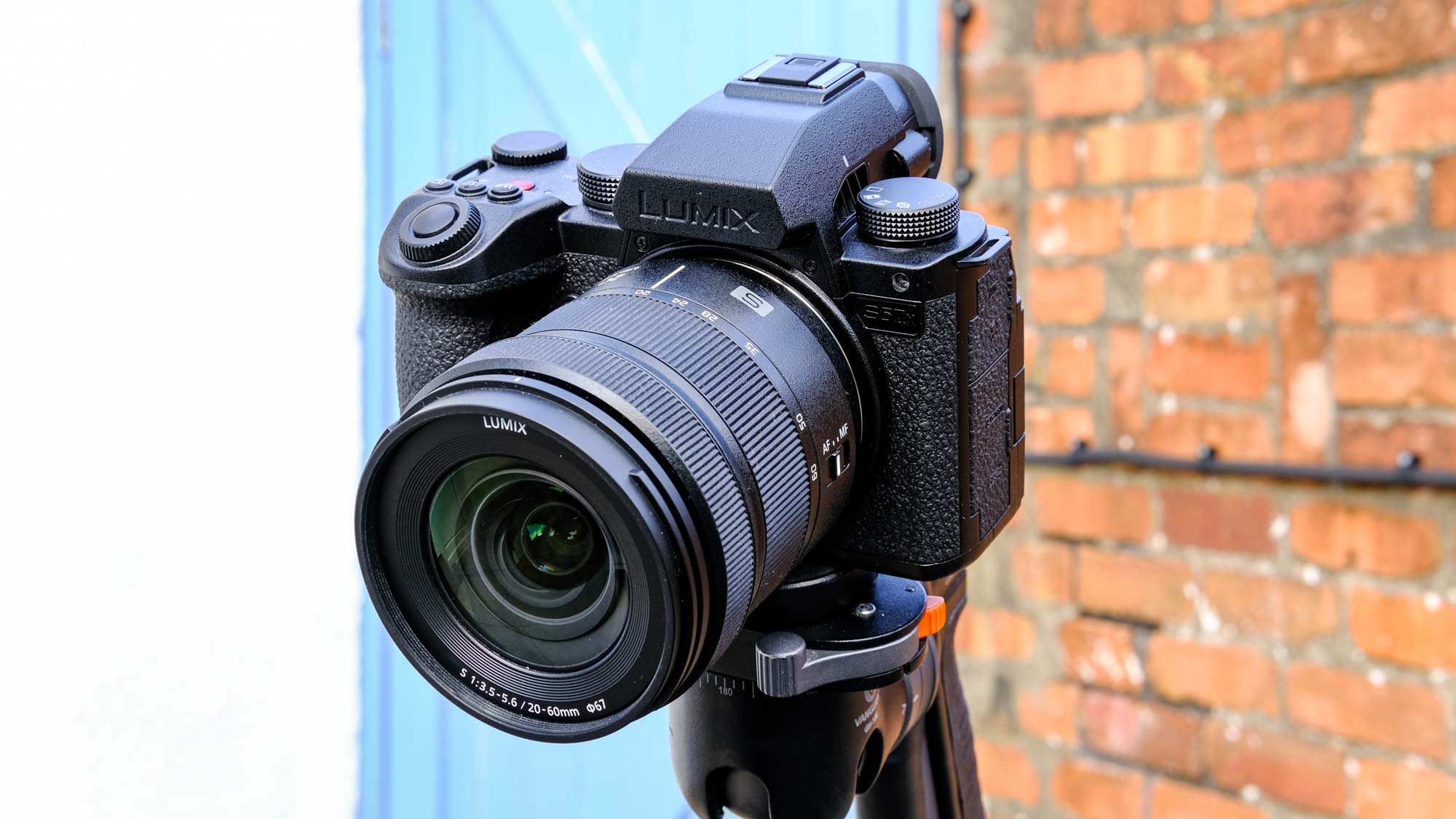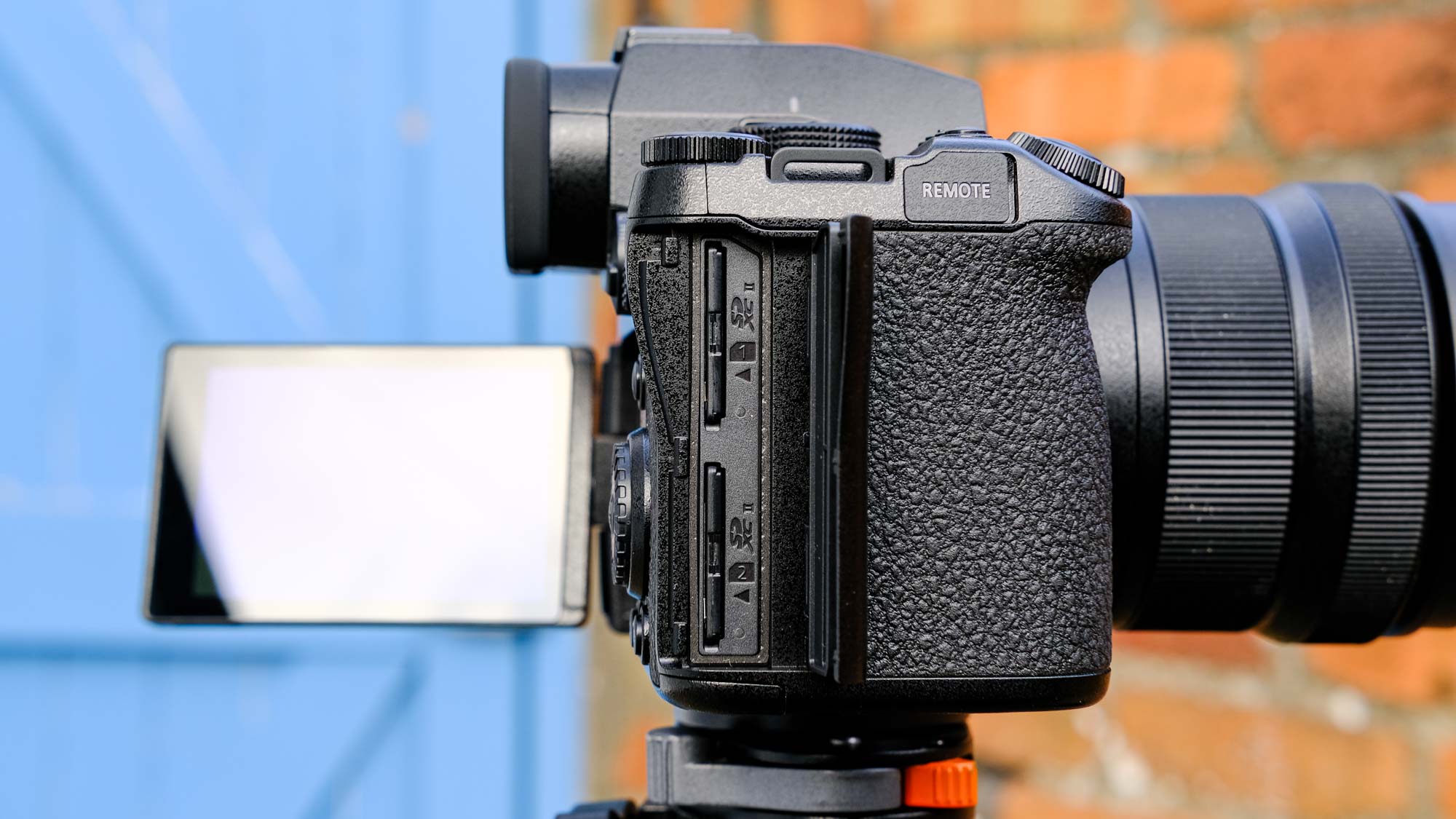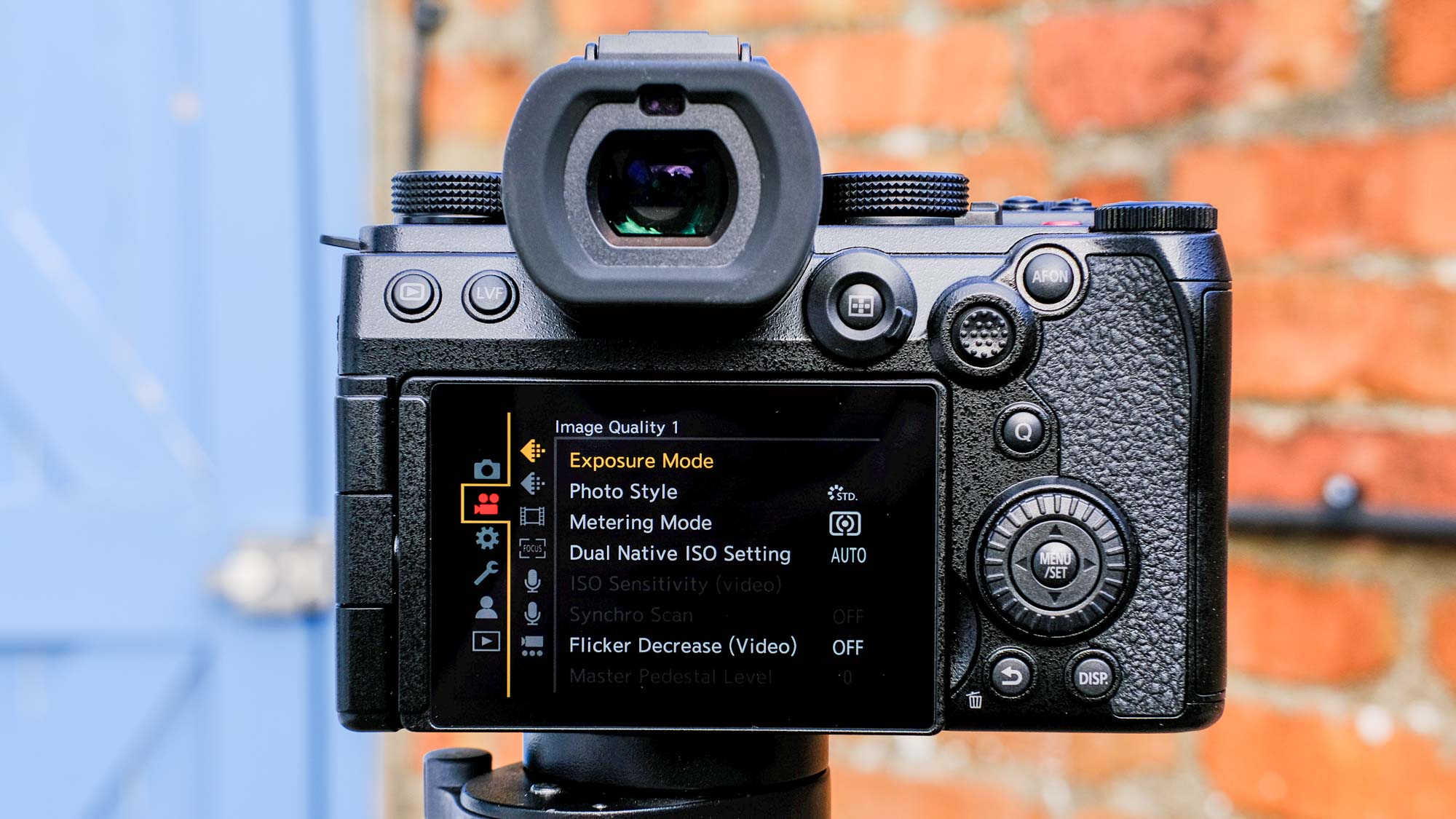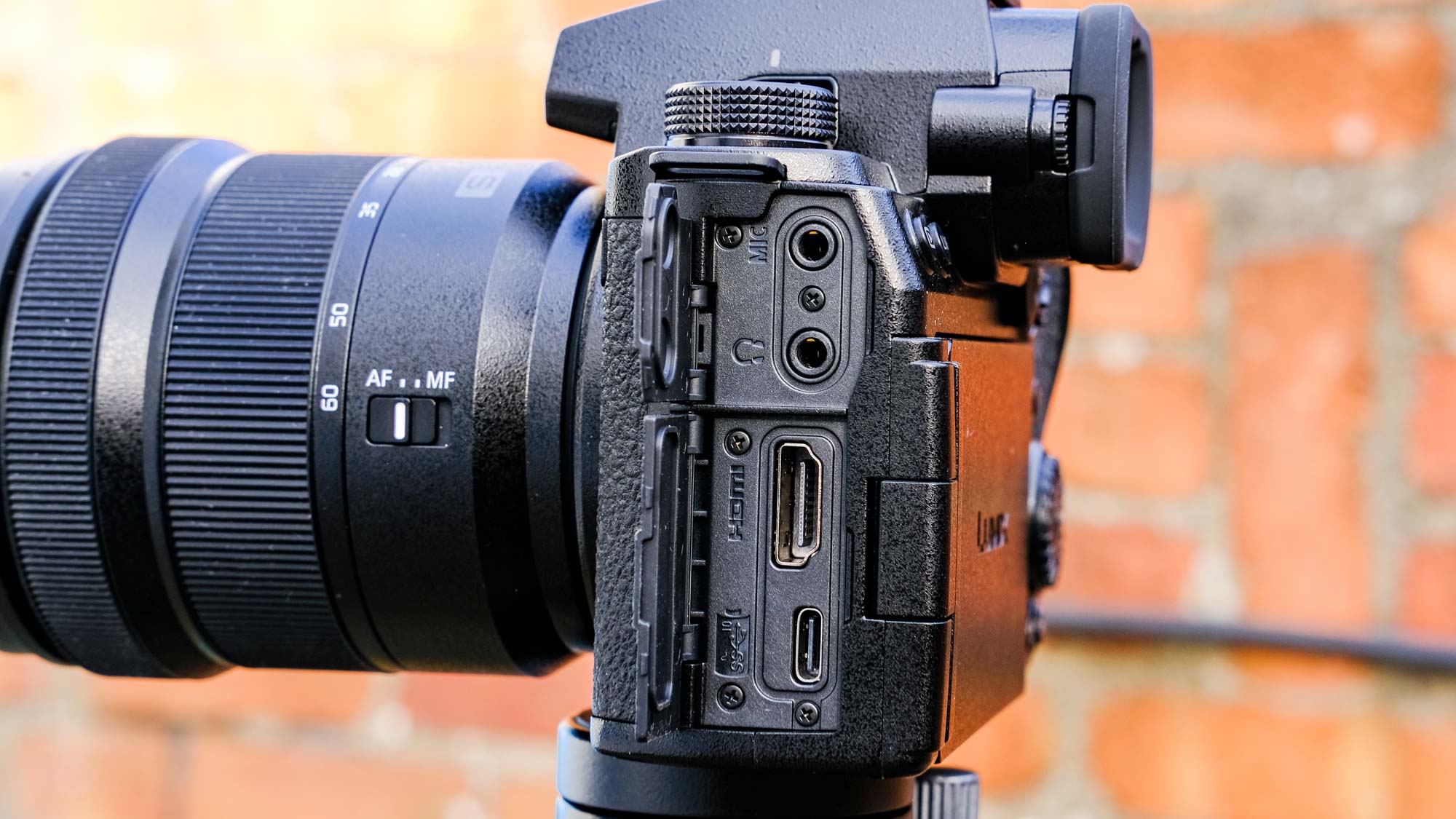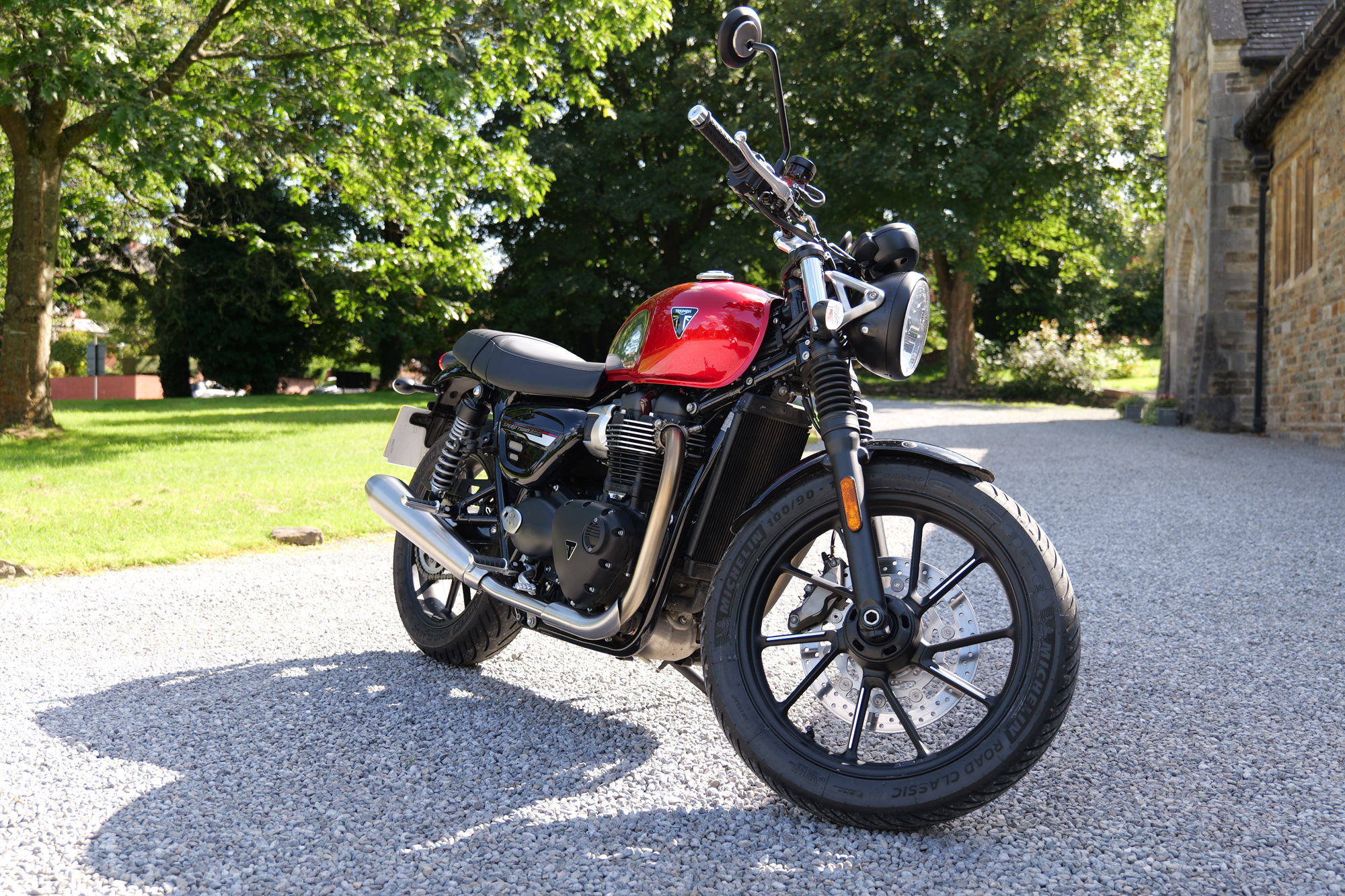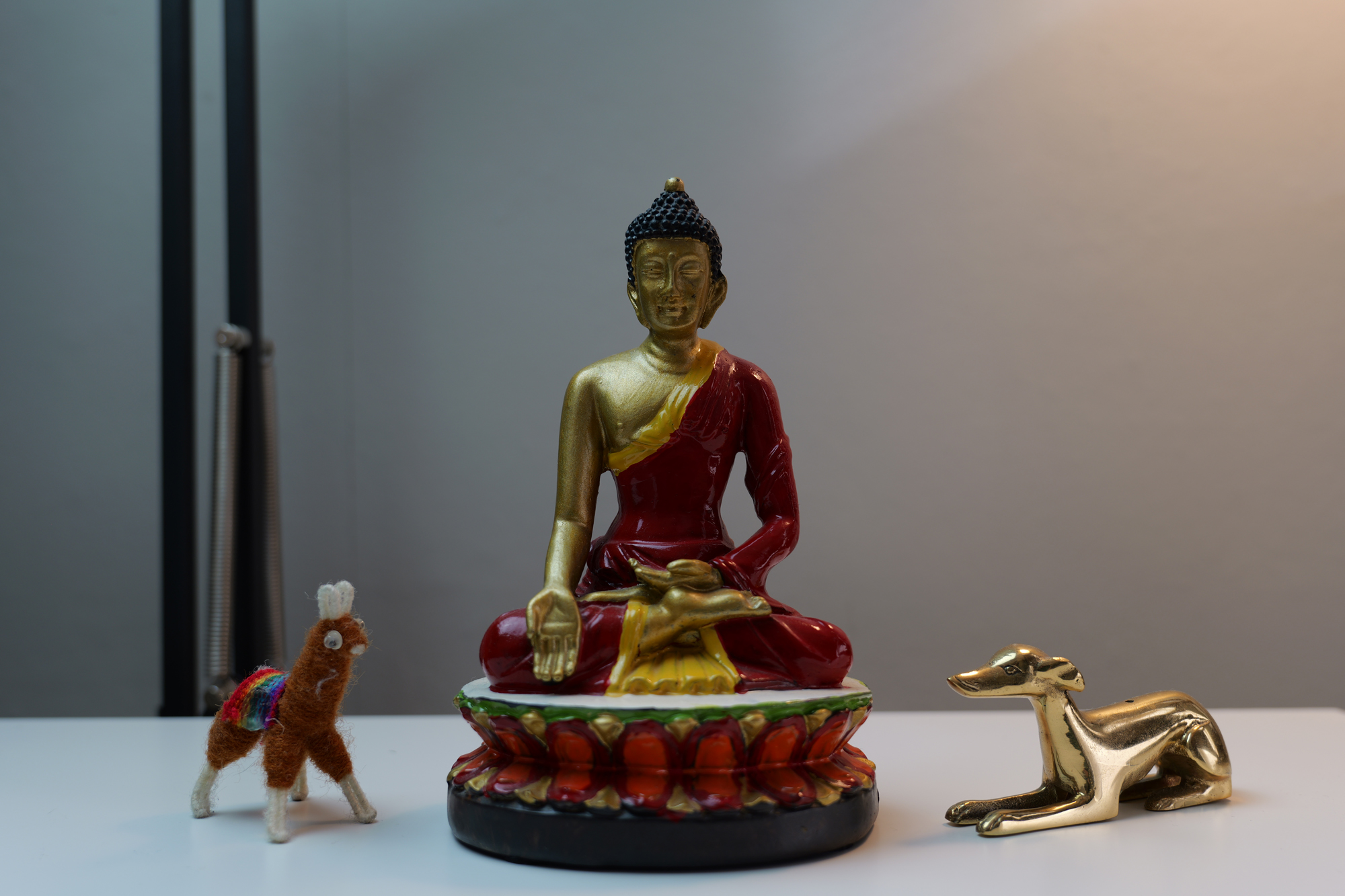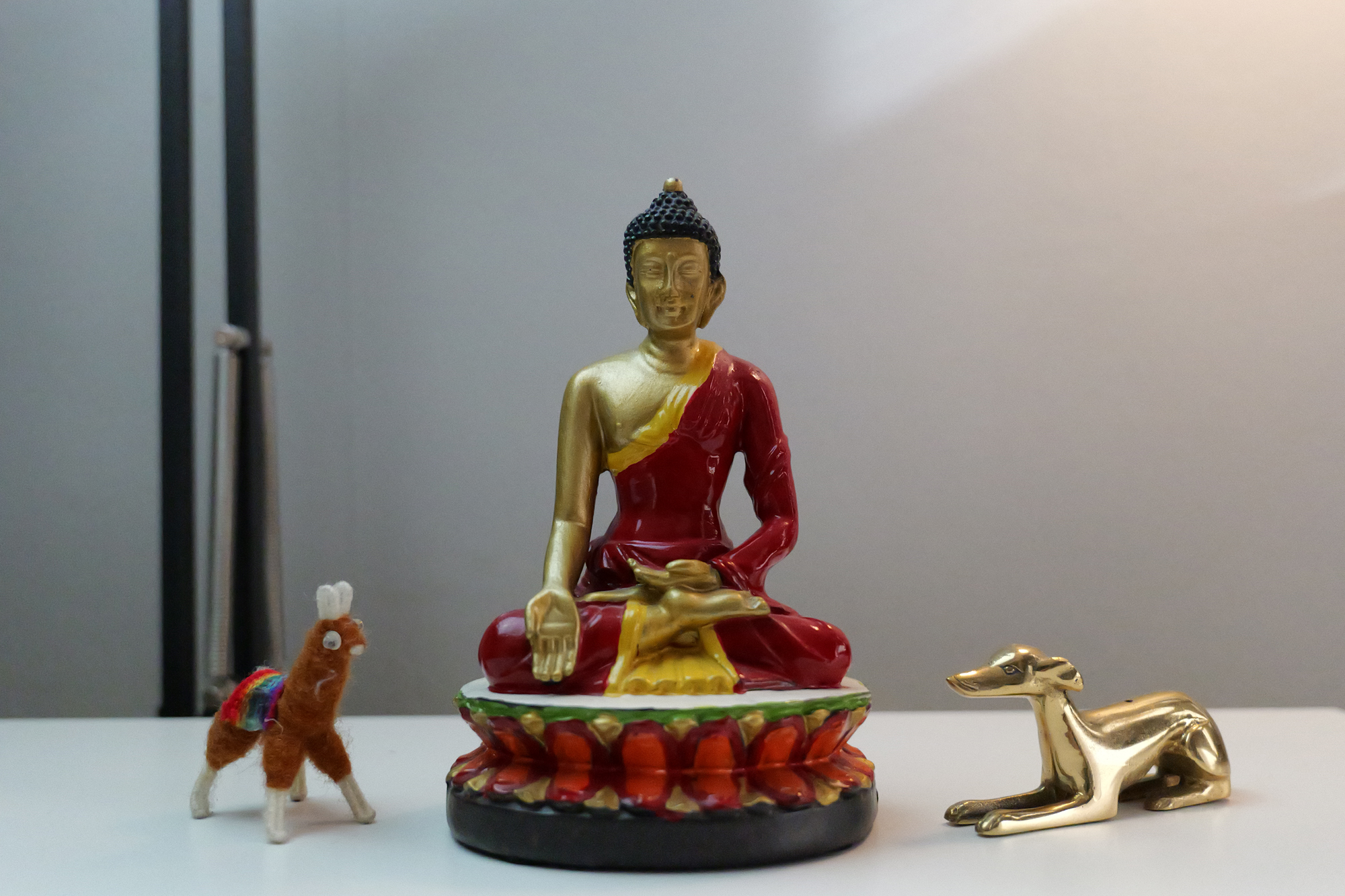Tom's Guide Verdict
The LUMIX S5IIX is a serious video creation tool, offering hybrid shooters huge video specs for the money.
Pros
- +
Professional video specs
- +
Fantastic build quality
- +
AF system much improved
- +
Great controls
- +
Doesn’t overheat
- +
A lot of bang for your buck
Cons
- -
AF still relatively featureless
- -
No CFexpress slot
- -
Light metering inconsistent
Why you can trust Tom's Guide
Sensor: 24.2MP CMOS Full Frame
Image stabilization: 5-stop IBIS
Autofocus: 779-point Hybrid AF
Viewfinder: OLED EVF, 3.68M dots
Display: 3-inch Vari-Angle LCD touchscreen, 1.84M dots
ISO: ISO100 - 51,200 (expandable to ISO50 - 204,800)
Max video resolution: 6K/30p
Ports: USB type-C, HDMI, 3.5 microphone jack, headphone, remote, hot-shoe
Storage: 2 x UHS-II
Wireless: Wi-Fi 5GHz, Bluetooth 5.0
Shutter speed: 1/8000
Shooting speed: 9 fps mechanical; 30 fps electronic
Battery life (CIPA): 370 shots
Size/weight (body inc battery, 1x card): 5.29 x 4.03 x 3.55 inches; 1.64 lbs
The Panasonic LUMIX S5IIX is one of the successors to the original LUMIX S5. I say “one of” because Panasonic has released two S5II models: the base S5II, as well as the S5IIX we’re testing here. Both are essentially the same, the X model getting a few added video specs. Each builds on the successes of and complaints about the original.
The original LUMIX S5 was one of the best mirrorless cameras around, and gained a reputation for being an outstanding video production tool. Both S5II models continue that legacy, featuring similarly powerful specs to appeal to the firmly video-oriented side of the ‘hybrid’ (meaning photo and video capable) mirrorless market. These two cameras, the S5IIX in particular, are not playing around — while many of today’s video-focused hybrids are geared towards vloggers and social media creators, you need only look at the number of resolutions and formats the S5II models offer to realize they’re aimed squarely at filmmakers and hardcore videographers, not TikTokers.
However, while the original S5 was lauded for having very few flaws, there was one issue, at least on paper: its autofocus. The S5 had a contrast-only detection system which, generally speaking, isn’t ideal for tracking moving subjects through a frame. And while in real world usage the S5’s AF was still pretty good, Panasonic has nevertheless decided to silence any murmurs by fitting both new models with the manufacturer’s first ‘hybrid-detection’ (combining both phase and contrast detection) AF system.
So how good is the S5IIX, and does it live up to its predecessor’s reputation? To save you some time, it’s a resounding ‘Yes’. However, that doesn’t necessarily mean it’s the right camera for you, and indeed for many people this will probably be the wrong camera. Read our full LUMIX S5IIX review to find out more.
Panasonic Lumix S5IIX review: Price & availability
The Panasonic Lumix S5IIX was released in June 2023 and retails for $2,199 / £2,299 in body-only format. This is around $200 / £200 more than the base S5II. We tested the camera with the Lumix S 20-60mm F3.5-5.6 lens, which is available with the camera in a kit for $2,499 / £2,499.
Seasoned videographers likely won’t need a kit lens, but if you’re new to the Lumix S system, the 20-60mm is a barely satisfactory lens to get started. It’s pleasingly sharp and has a versatile zoom range for video production. However, its modest F3.5-5.6 maximum aperture can be limiting in lower light if you don’t have an artificial source, so I’d recommend something a little faster.
Where native L-mount lenses are concerned, Panasonic offers only 14 native S Series lenses for their full-frame cameras. There are some fast and affordable primes, although fast native zooms don’t come cheap — you’re looking at around $2,000 for an f/2.8 zoom from Panasonic. This likely won’t matter to those with professional budgets or anyone already invested in the system, but could be off-putting for aspiring amateur filmmakers or semi-pros considering a move to the system and want a good choice of lenses. Luckily, third party manufacturers also offer AF lenses for the L-mount, including Sigma with their usual range of affordable f/2.8 zooms, which boast excellent build and image quality.
Get instant access to breaking news, the hottest reviews, great deals and helpful tips.
Panasonic Lumix S5IIX review: Design
The Panasonic Lumix S5IIX looks almost identical to the base S5II, which itself looks identical to the original S5. This isn’t a bad thing, though — it’s a handsome camera, especially if you like the modern aesthetic. The only giveaways that the S5IIX is the uprated version are its blacked-out Lumix and model logos, which give a stealthy, mean appearance that I think looks pretty cool.
At 5.29 x 4.03 x 3.55 inches and 1.64 lbs, the S5IIX is relatively large and weighty, especially with a zoom lens fitted, and I wouldn’t want to walk around with it on my neck for a full day of street photography. However, it doesn’t feel cumbersome in hand. I had no issues shooting one-handed photos of my dogs at odd angles on the floor, primarily thanks to the large sculpted grip and vari-angle screen.
Build quality is fantastic. The camera body is primarily metal, wrapped in grippy plastic, both of which feel extremely premium and sturdy. The card compartment is covered by a spring-loaded plastic hatch which gives a weighty click when locked and unlocked. Most dials clunk nicely when rotated and buttons provide satisfying haptic feedback. However, the control dial around the shutter button is plastic, looking and feeling particularly cheap next to the other metal dials, and the shutter button itself has very little resistance (although half-press is easy to find). These two issues are minor but nevertheless a shame, slightly undermining an otherwise flawless build.
The rear monitor isn’t the highest resolution at 1.84M dot, but colors on it look absolutely fantastic, and there are the usual range of controls to allow the monitor to be calibrated, including backlight, brightness and red/blue tint. There’s also saturation and contrast controls, which are options you don’t always see on non-video-focused cameras and will give extra control for calibrating the screen when shooting in-camera graded video using a LUT.
Up top, there’s a 3.68M dot viewfinder with a 120fps refresh rate, which pans smoothly and features more than enough resolution for detailed focus checking. This can be tweaked in the same way as the rear monitor.
Connectivity options are decent. There’s a hot-shoe on top, and on one side of the camera are ports for a microphone and headphones. There’s also a full HDMI (a step up from micro-HDMI on the original S5) port and a USB-C port. These can be used to record externally out to either a video recorder or an SSD respectively. Unfortunately, they will get in the way of rear screen movement when either is plugged in, especially the HDMI, which stops the screen being able to tilt upwards for viewing from above. This is an issue on lots of other cameras and there’s often no way around it, although putting the HDMI port at the base of the panel would have given a few extra degrees of upwards tilt.
Near the shutter there’s a remote hookup port, above dual UHS-II card slots. Professional shooters may be disappointed to see only UHS-II with no CF-Express port as you’d find in the Sony A7 IV and A7S III, but demanding resolutions and bitrates can be recorded to SSD or HDMI instead.
Panasonic LUMIX S5IIX review: Controls
The Panasonic LUMIX S5IIX features plenty of physical controls. All basic photography shooting parameters are covered — two dials for aperture and shutter, an ISO button to access sensitivity via either dial, plus white balance and exposure compensation. This gives you almost the entirety of your basic exposure controls at your fingertips.
The same goes for focusing. Focus modes are accessed via a nifty dial near the EVF housing, easily reachable by the thumb when using the EVF or rear display. In the middle of the dial is the focus point selection, and to the right is the focus joystick. It’s a well thought out layout that feels easy, intuitive and comfortable to use, and the S5IIX was a joy to use from the off — there was no real learning curve. No searching, everything essential was immediately obvious and easily reachable during shooting. For anything else, there’s the Q menu, plus the main menu system.
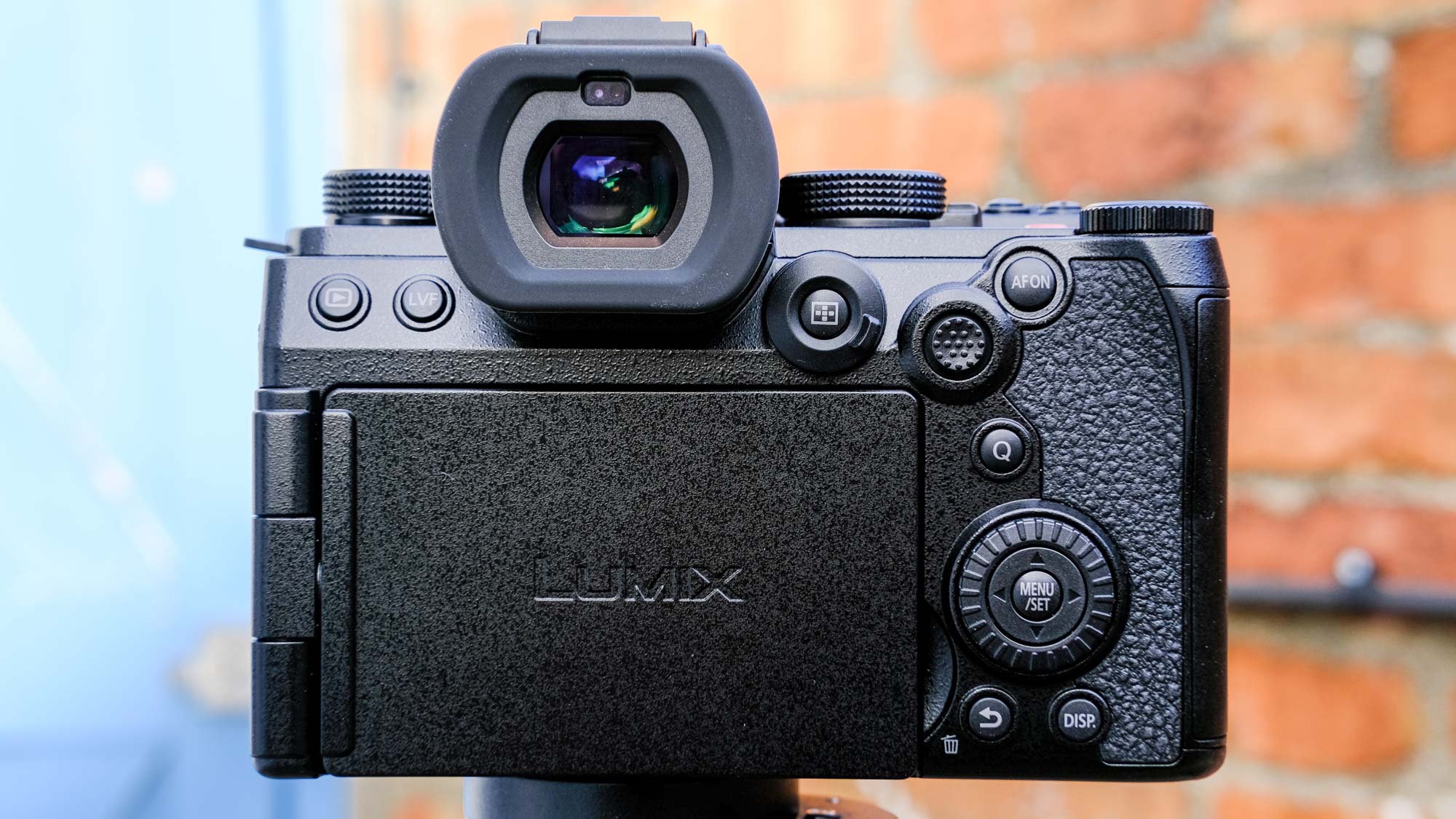
The menu system itself is again really nicely implemented. It’s sensibly laid out, really clear and lovely to use. The menu remembers where you were last time you opened it, letting you play around with settings, see what they look like, then return to the same menu page quickly to tweak some more. This seems like such basic design language, yet for some reason is still not universally applied to camera menus.
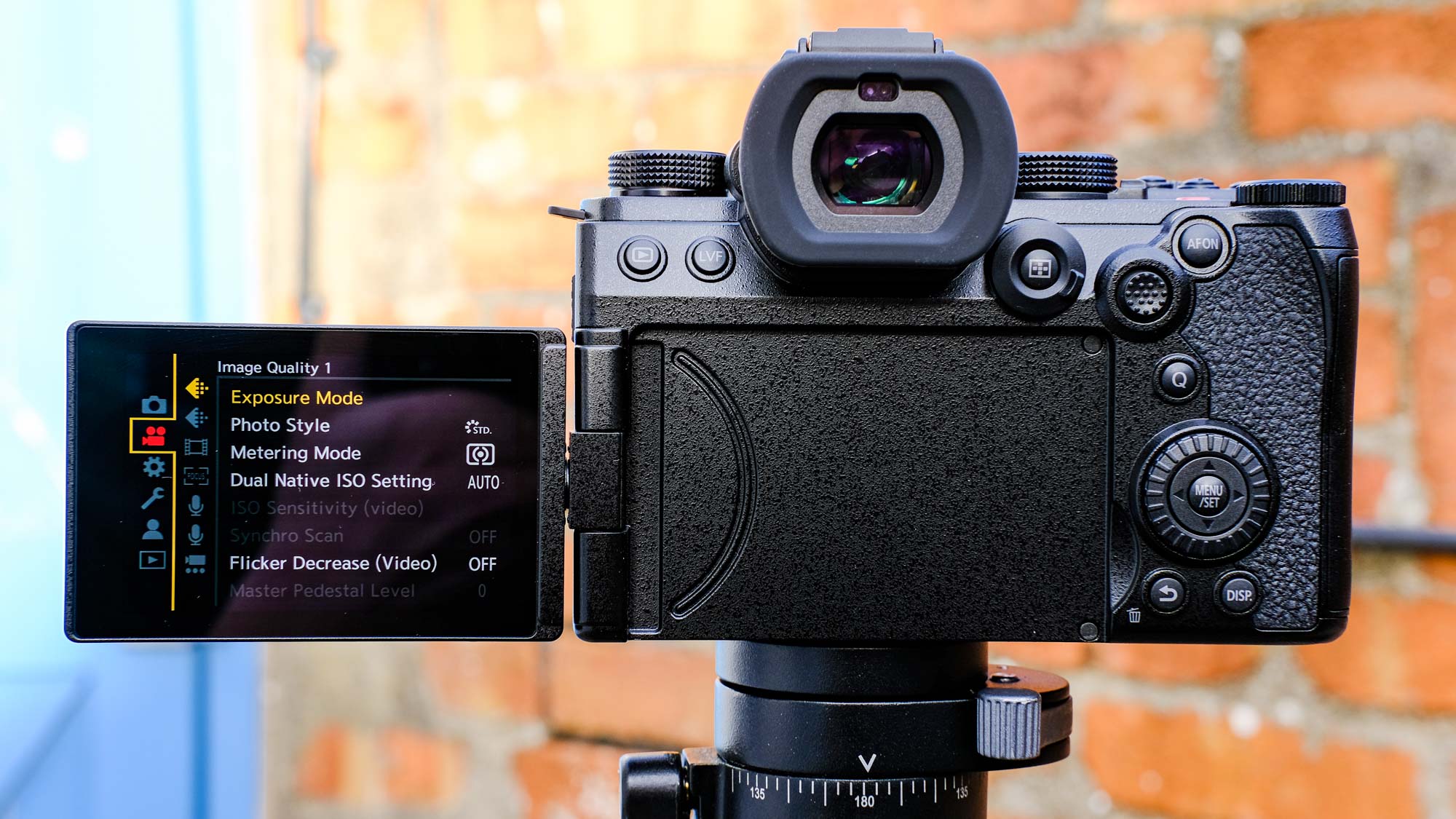
One odd issue with the S5IIX is that it’s extremely slow to respond to certain inputs. Changing shooting parameters is fine, thankfully. But after pressing the playback button, the camera routinely takes around 3 seconds to switch to playback mode — initially I would think it hadn’t registered, press a second time and end up back in shooting mode. The first start up of the day also usually takes over 5 seconds — again, I initially found myself plugging the camera in during this time, thinking it was dead, only for it to turn on and have full charge. It’s so strange.
Panasonic LUMIX S5IIX review: Autofocus performance
The LUMIX S5IIX and S5II are the first cameras to feature Panasonic’s new 779-point hybrid-detection (phase and contrast detection) AF system, putting silence to criticism of the original S5’s contrast-only detection. In theory, this should make the S5II models better at detecting moving subjects. In reality, reading long-term anecdotal user experiences online — and I’m talking anecdotes from professionals actually using the original S5 day-in, day-out — demonstrates that the S5’s autofocus worked just fine. That’s if the pros in question weren’t rigging up cine lenses and using manual focus in the first place.
Nevertheless, Panasonic knew that on-paper specs sway lots of first impressions, from both the media and consumers. As such, for the S5II and S5IIX, hybrid-detection AF was a priority.
In my testing, the autofocus in the S5IIX was pretty good. It detected my greyhounds easily and tracked them accurately across the frame. While shooting stills in human face/eye detection mode, faces and eyes were detected reliably in well-lit to moderately low light conditions (in low light, the S5IIX struggled a little). For video, in the clip below, I shot some footage of myself popping in and out of frame, and moving backwards and forwards. Performance here was good, with the camera tracking me through the frame pretty well. There are few moments where I’m out of focus, a couple of which can be put down to the minimum focusing distance of the lens, but the S5IIX generally did a great job.
Detection modes are where the LUMIX AF system shows its infancy. Purchase a Canon EOS R6 Mark II or a Sony A7 IV for similar money, a Fujifilm X-T5 for hundreds less or an X-S20 for half the price, and you’ll have a plethora of detection modes open to you, including animal eye detection, plus specific modes for birds, trains, cars, and even planes. The S5IIX offers only human eye/face and basic animal detection. Will this matter to professional video producers? Probably not, but it shows there is still room to grow.
Panasonic LUMIX S5IIX review: Image performance
The LUMIX S5IIX features a 24.2MP full-frame sensor. If you are shooting stills, 24MP delivers highly detailed shots, with enough resolution for moderate cropping and for online display or small-to-medium-sized prints.
Colors look fantastic in camera Standard profile, appearing deep, vivid and natural, without looking artificial or overly saturated, as you can see in the photo of my bike below. This photo also demonstrates the wide dynamic range of the camera, which has captured the dark shadows in the trees behind, up to the bright highlights of the sunlit white gravel and the bright sky peeking through the trees, all with very little data lost to blown out highlights.
There are also a range of different color profiles to choose from if you’re shooting straight out of camera. These also form the LUT bank for video. The photo below was shot in Cinelike V2, which is desaturated and low contrast for a dream-like cinematic effect.
The S5IIX performs impressively for high-speed photography. Using two UHS-II V60 cards, the S5IIX was able to shoot RAW & Fine JPEG in continuous high-speed drive for over 200 shots. That’s nearly 7 seconds of 30fps shooting with the e-shutter, or over 22 seconds at 9fps using mechanical shutter. Even after 200 shots, the buffers weren’t totally filled. I wasn’t able to view my burst photos straight away, but could carry on taking single photos as the camera wrote the image to cards. This is great to see, as it could make the difference between missing or capturing a crucial ‘once-in-a-lifetime’ shot at, for example, a wedding.
The S5II and S5IIX both feature 5-stop in-body image stabilization (IBIS). Handheld, I was able to drop my shutter down to ⅕ sec without any blur from camera shake, which came in useful given the relatively narrow maximum apertures of the 20-60mm kit lens.
High ISO performance is excellent, thanks to the full-frame sensor and modest pixel count. In the image below at ISO 100, you can see plenty of detail. The individual paint strokes in the statue’s gold paint are visible, and the facial features are clearly defined.
At a whopping ISO 25,600 in the photo below, the image looks astoundingly good. Naturally, there is noise on the grey wall in the background, but it isn’t destructive or even that distracting. The gold paint and facial features are noticeably less defined than at low ISO, but the image has not been ruined by noise or excessively smoothed by the camera’s noise reduction.
Something the unedited images above demonstrate is the variations in the S5IIX’s internal light metering, an issue I experienced throughout my time testing the camera. Both ISO test shots above were taken in multi-metering mode, using the same setup under fixed artificial lighting with the light meter displaying EV-0, but you can see how dark the first shot is compared to the second. This is problematic where consistency between shots is important.
Panasonic Lumix S5IIX review: Video performance
The LUMIX S5IIX offers a wide number of recording options and resolutions, giving filmmakers lots of flexibility to tailor footage based on their requirements, workflows and post-production needs. Internally, compressed full frame capture is available in 6K/30p with Cinema 4K/60p on offer at a crop, both in MOV, with 4:2:2 10-bit ALL-Intra or Long GOP compression types available up to C4K (after that, up to 6K only 4:2:0 Long GOP compression is possible). For lower compression and higher data capture, 5.8K/30p or C4K/60p can be recorded in Apple ProRES externally to SSD in 12-bit 4:2:2 at bitrates of up to 1.9Gbps. RAW is also available out to external recording devices via HDMI, saved in ProRES RAW or Blackmagic RAW depending on the external recorder used. VLog is also available, demonstrated in the test video below, providing 14 stops of dynamic range for extra grading and exposure flexibility in post. There’s also a bank of LUTs available for color grading in-camera.
As far as slow motion, 120p is available in Full HD, which is a tad disappointing given rivals like the Sony a6700 can record 120fps in 4K. There’s also an S&Q mode for recording footage at 60p for 30p slow motion straight out of camera.
The standard S5II cannot record ProRES or RAW out of the box (although a paid firmware upgrade to allow RAW output is an option) and does not offer ALL-Intra compression. It also lacks the ability to record via USB to SSD, and can’t live stream via Wi-Fi, ethernet or USB-C, all of which the X model can.
Once again, the 5-stop IBIS system (increased to 6.5-stop with a Panasonic OIS lens) is welcome for video as well as stills. In the footage above, you can see how stable the video is with me holding it in my hand. Contrast this with the video below, which is very shaky, and you can see that the IBIS results in much smoother footage.
The IBIS system is especially useful for and noticeable when panning. Obviously, it isn’t as good as a gimbal, but as you can see in the video below, you can feasibly pan without it seeming too shaky.
Thanks to a built-in fan, the S5II and S5IIX offer unlimited recording at 4K/60p and 30 minutes at 6K/30P. I experienced no overheating issues during testing, shooting 6K/30p up to the 30 minute limit and then 4K/60p until the battery ran out. Fan noise wasn’t noticeable either, so shouldn’t cause issues for mics mounted on or nearby the camera.
Panasonic Lumix S5IIX review: Battery life
The Lumix S5IIX’s battery is CIPA rated for 330-shots but, as this is a video-centric camera, we tested battery life for video rather than stills. According to Panasonic, the S5IIX’s battery should last for 90 minutes of continuous recording at 4K/60p with an APS-C crop. In testing, this proved accurate, maybe a little conservative. I shot at 6K/30p full frame for 30 minutes, and then 4K/60p APS-C for 70 minutes, for a total of 100 minutes shooting time. But while that may be slightly better than advertised, battery life is still sub-standard for a camera of this price. The similarly-priced Sony A7IV, for example, has a 580-shot rated battery, while the much, much cheaper Fujifilm X-S20 holds a 750-shot rating.
Panasonic Lumix S5IIX review: Verdict
There really is very little to say negative about the Lumix S5IIX. It’s an all round fantastic camera, which excels at doing what it was designed to do, and pleasing who it was designed to please.
While it’s great for stills, the S5IIX is not a photography-oriented camera, and its video specs are seriously overkill for anyone who will be primarily taking photos. Enthusiast photographers would instead want to look at the cheaper Fujifilm X-T5. If you’re a photo-oriented pro or semi pro who dabbles in a bit of nicely produced video, the Canon EOS R6 Mark II or Sony A7 IV will better fit the bill. Both cameras can shoot 4K video and have better developed autofocus systems that will really benefit photographers. Likewise, the S5IIX is overkill for vloggers, who won’t need its professional specs and would instead be better suited to a Canon EOS R50 or a Fujifilm X-S20.
However, if you’re a serious video creator or are on your way to being one, shooting professional online content or filmmaking, this camera is an incredibly compelling package for the money. It’s built and handles well; photos and video look beautiful; and there’s a wide variety of recording options available to you that will give you incredible flexibility and serious performance. Sure, the autofocus can’t track trains, but is that really going to be a problem in real world filmmaking? Unlikely.
The Lumix S lens range is a little limiting, and S5IIX’s multi metering is inconsistent. Apart from those things, though, if you’re a filmmaker, this camera will leave you with very few complaints.

Peter is a Senior Editor at Tom's Guide, heading up the site's Reviews team and Cameras section. As a writer, he covers topics including tech, photography, gaming, hardware, motoring and food & drink. Outside of work, he's an avid photographer, specialising in architectural and portrait photography. When he's not snapping away on his beloved Fujifilm camera, he can usually be found telling everyone about his greyhounds, riding his motorcycle, squeezing as many FPS as possible out of PC games, and perfecting his espresso shots.
